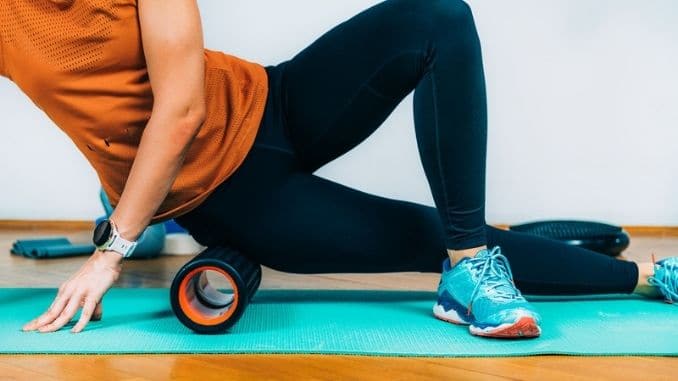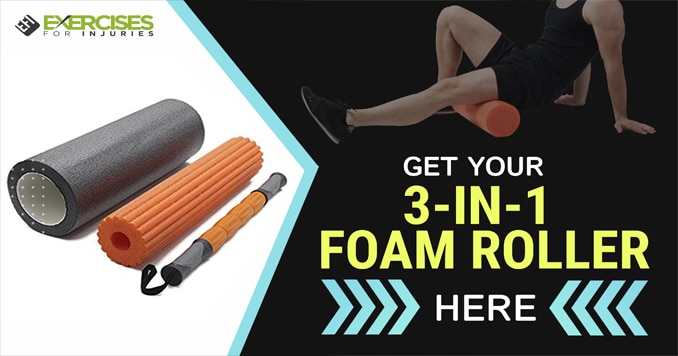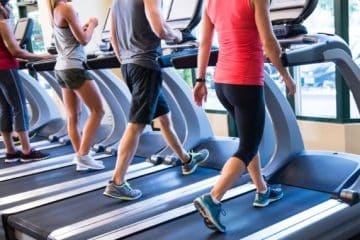Foam rollers have become increasingly popular over the last few decades. They were first used by physical therapists as self-massage tools in the 1980s, then rapidly gained popularity with dancers to aid in muscle recovery. Today, foam rollers are one of the most common exercise tools used in gyms and homes alike. They are used for injury recovery, promoting flexibility, balance and muscle strengthening, and self-massage. Odds are, you already have a foam roller in your house. If not, they can be found virtually anywhere you shop, from sporting goods stores to department stores, to your favorite online suppliers.
Whether you are an athlete, a gym enthusiast, or someone who spends far too much time being sedentary, your muscles are begging you to use your foam roller daily! For active individuals, foam rolling can improve your range of motion, decrease muscle exhaustion, and decrease any post-workout soreness. For less-active individuals, the foam roller can stretch out tight, neglected muscles, improve circulation, and increase blood flow. Truly, foam rolling is for everyone.
Below we have shared 8 foam roller exercises that your body is begging you to do.
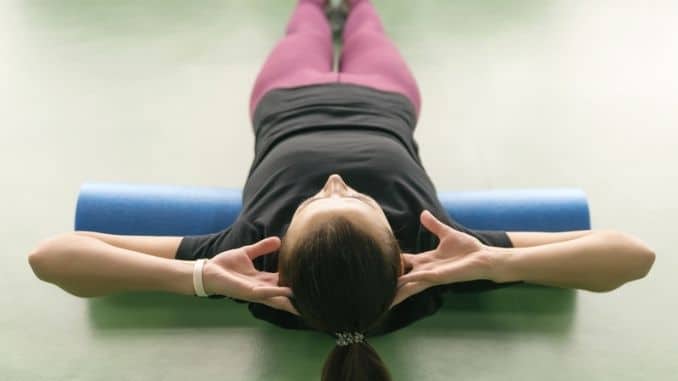 1. Back
1. Back
Unfortunately, back pain is incredibly common. The good news is that foam rolling can be a big help. Whether your discomfort is due to activity or a result of too many hours spent behind a desk in a seated position, taking the time to roll out your back muscles can make a world of difference, improving muscle activation and reducing tightness.
Begin in an upright seated position on the floor with your legs bent and your feet flat on the floor. Position the foam roller behind your body, then lean back so the roller is lying across your lower back. Interlock your fingers behind your head or place your hands on your stomach. Slowly alternate bending and straightening your legs to move the foam roller up and down your back.
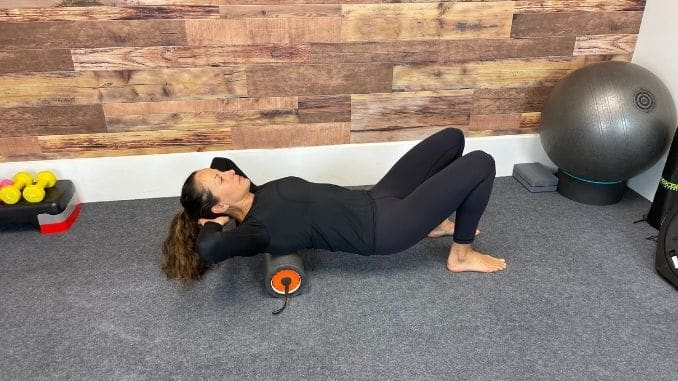 |
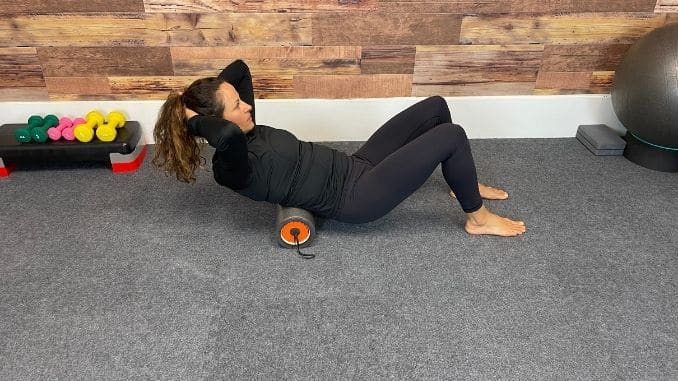 |
Start with 1 set of 10 repetitions.
2. Chest and Shoulder Openers
Hours spent each day in a seated position, coupled with far too much time staring at our handheld devices have resulted in poor posture and increasingly tight neck and shoulder muscles. Taking a few minutes to release this tension can help to elongate your spine, unlock your tight shoulders, and increase your range of motion.
Begin in an upright seated position on the floor with your legs bent and your feet flat on the floor. Position the foam roller on the floor behind you, parallel to your back. Lean back onto the roller, making sure your neck and head are also supported. Deeply inhale, then lift both arms towards the ceiling at shoulder height. Exhale as you slowly lower your straight arms at your sides, opening up your chest area for a light stretch as you rest the backs of your hands on the floor at your sides. Hold this position for a few seconds, then repeat the movement.
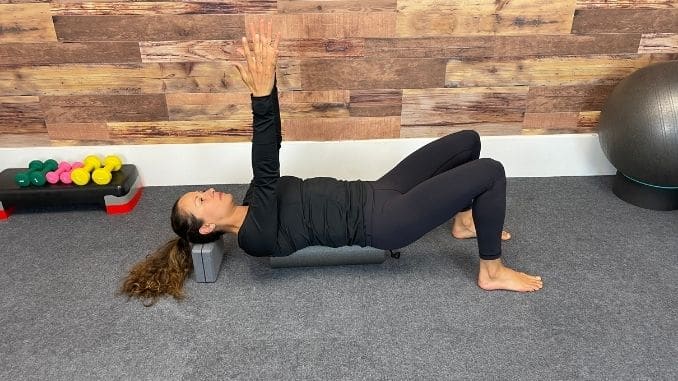 |
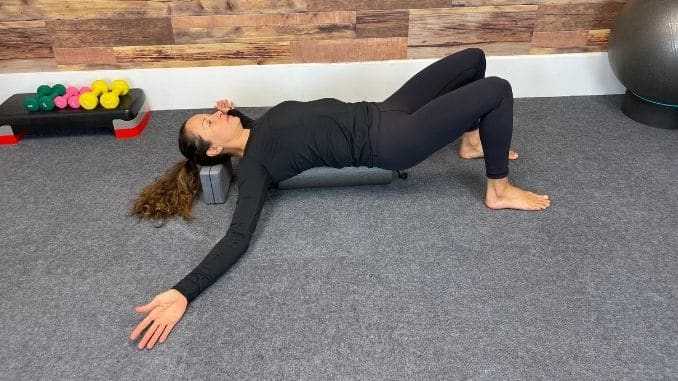 |
Start with 1 set of 5 repetitions.
3. Glutes
Your glutes are the largest muscle group in your body, and they have several fascial layers. Foam rolling the glutes can help improve mobility and hip range of motion. Your glute muscles play an essential role in everyday activities like walking and stair climbing. Taking the time to increase blood flow, activate your muscles, and improve the fascial gliding of this all-important muscle group is a must – especially if you spend hours sitting each day!
Begin in an upright seated position on top of the foam roller. Lean back and place both hands on the floor behind the roller for support. Lean your upper body to one side and cross your ankle over your opposite leg to place your weight on one cheek. Use your hands and supporting leg to slowly roll over your glute muscles. After several repetitions, repeat the movement on the opposite side.
To make this exercise less intense, roll both sides of your seat at the same time and bend your knees to place less weight into the roller.
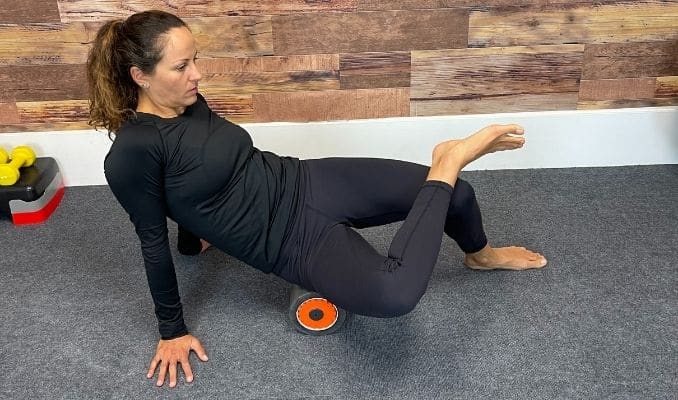 |
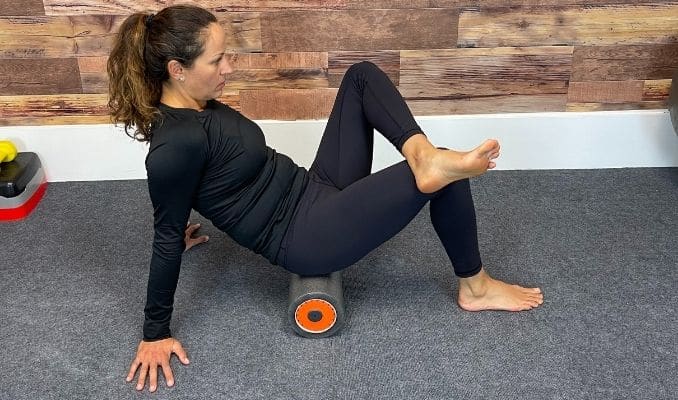 |
Start with 1 set of 5 repetitions on each side.
4. Hip Flexors 1
Tight hip flexors have become an epidemic amongst office workers, truck drivers, and athletes alike. Hours spent in a seated position can wreak havoc on your hips, shortening and tightening your muscles, decreasing your flexibility, and leading to pain and injuries. The foam roller can be your best defense against tight hips. Your hip flexors are the muscles that connect you're lower back to your hips, groin, and thigh bones. They stabilize the lower spine and play a vital role in walking, postural alignment, mobility, flexibility, and balance.
Begin by lying on your back on the floor with your knees bent and your feet flat. Position the foam roller under your sacrum (where your lower back meets your tailbone). Engage your core, straighten one leg, and use your hands to pull your bent knee up towards your chest. Hold this position for 10 – 15 seconds. Lower your bent leg to the floor and repeat the movement on the opposite side.
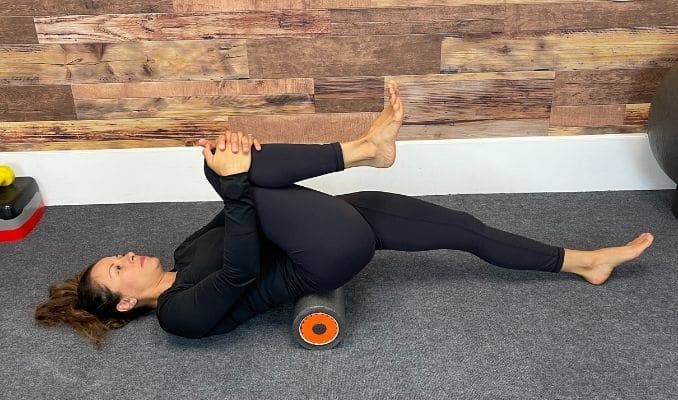 |
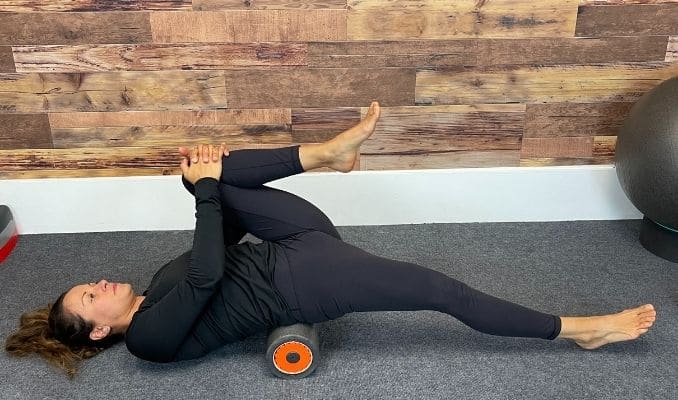 |
Start with 1 set of 1 repetition on each side, holding for 10 – 15 seconds.
5. Hip Flexors 2
With your hip flexors playing such an integral role in your overall mobility, flexibility, and everyday movements, it is definitely worth the time to go through 2 separate rolling exercises focused on your hips.
Begin by lying down in a forearm plank position with the foam roller positioned under one of your hip flexors. Bend your opposite leg comfortably out to the side. Resting on your forearms, roll slowly up and down and side to side to target your hip flexor. Repeat the movement on the opposite side.
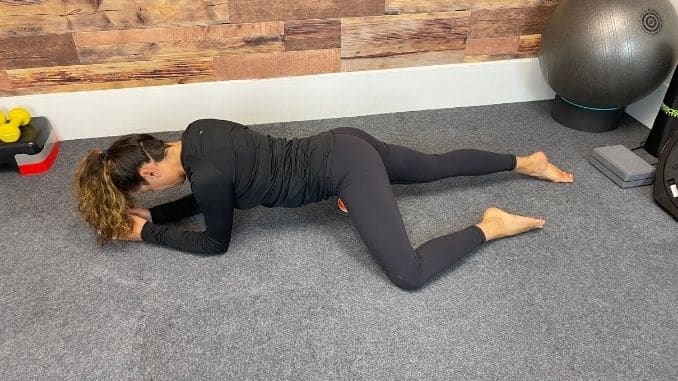 |
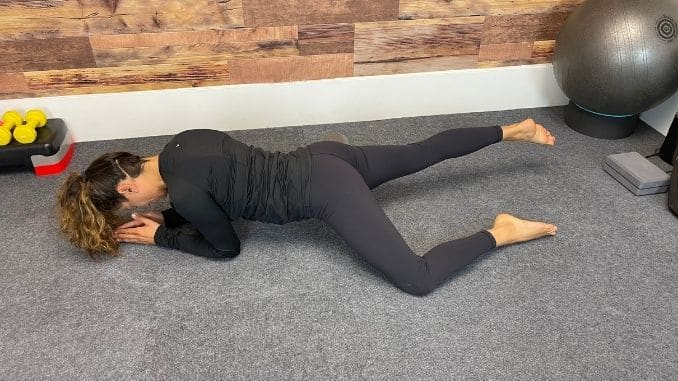 |
Start with 1 set of 5 repetitions on each side.
6. Quads
Your quads are a very dense muscle group that plays a dominant role in most active individuals. Because your quadricep muscles share a common attachment to your kneecaps, rolling this area can greatly decrease stress on your knee joints. In addition, foam rolling can increase knee flexibility, reduce tension in your upper legs, and increase hip mobility.
Begin by lying down in a forearm plank position with the foam roller positioned under your upper thighs. Resting on your forearms, roll slowly down your legs, stopping just above your knees. Rollback up to the tops of your legs to complete one repetition. Be careful not to roll over your knee joints. Repeat the movement.
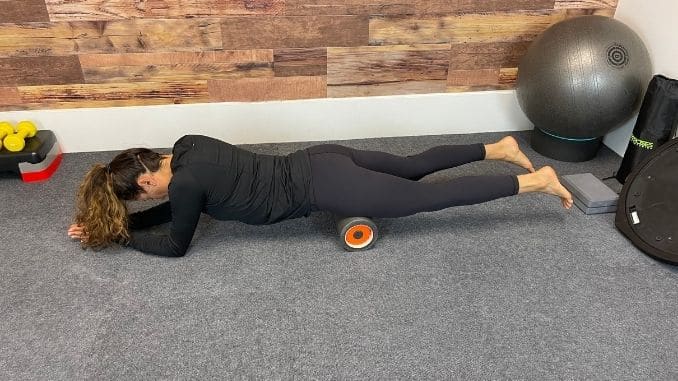 |
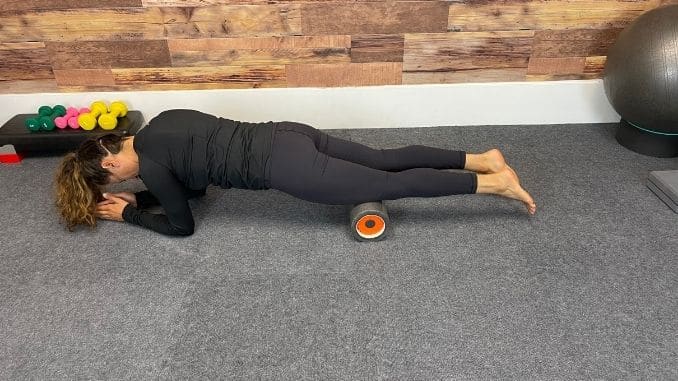 |
Start with 1 set of 10 repetitions.
7. Hamstrings
Muscle imbalances can lead to instability, damage to your joints and ligaments, and an increased risk of injuries. Rolling out your hamstrings not only balances out the rolling of your quads but also helps to loosen up your upper legs and improve hip mobility for decreased stress on your lower back.
Begin in an upright seated position on the floor with your legs bent and your feet flat on the floor. Position the foam roller under your bent legs. Plant your hands on the floor behind you for support and straighten your legs. Use your arms to support your weight as you roll from the bottom of your seat, to just above your knees and back. Repeat the movement.
 |
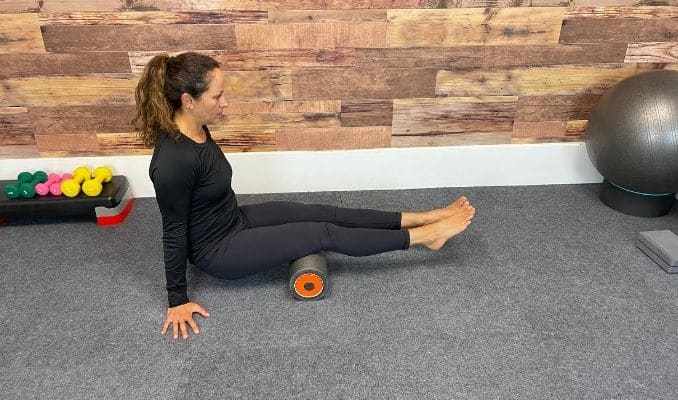 |
Start with 1 set of 10 repetitions.
8. Calves
Tight calf muscles can limit your ankle mobility and impact your ability to conduct basic everyday activities like walking and climbing stairs. Foam rolling your lower leg muscles can decrease the tension along the backs of your legs and greatly reduce your risk of injuries.
Begin in an upright seated position on the floor with your legs bent and your feet flat on the floor. Position the foam roller under your bent legs. Plant your hands on the floor behind you for support and straighten your legs. Use your arms to support your weight as you roll from just below your knees, to slightly above your heels and back. Repeat the movement.
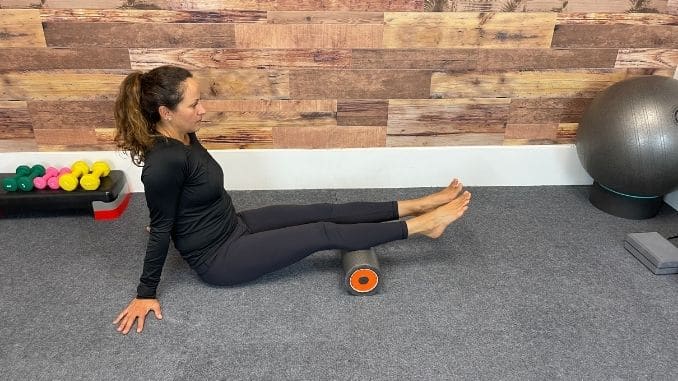 |
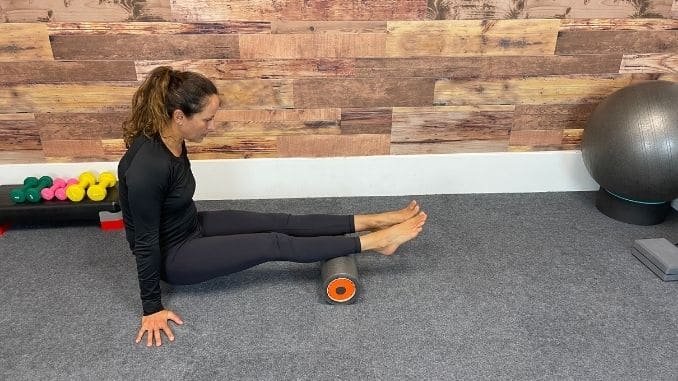 |
Start with 1 set of 10 repetitions.
Foam rollers are available in many different lengths, circumferences, and densities, so choose the roller that best works for you, or even better, invest in a 3 in 1 roller that includes a massage rolling stick. Going through these simple exercises that your body is begging you to do for as little as 5 – 20 minutes each day is the best way to stay flexible, stress-free, and avoid future injuries.
Now that you've learned the best foam roller exercises for your body, it's time to purchase the best available roller for your home. Click here to learn more.

